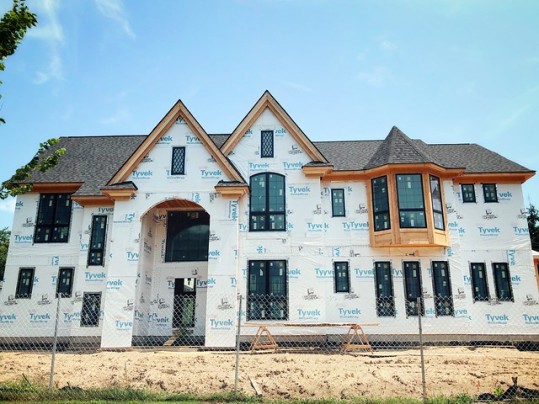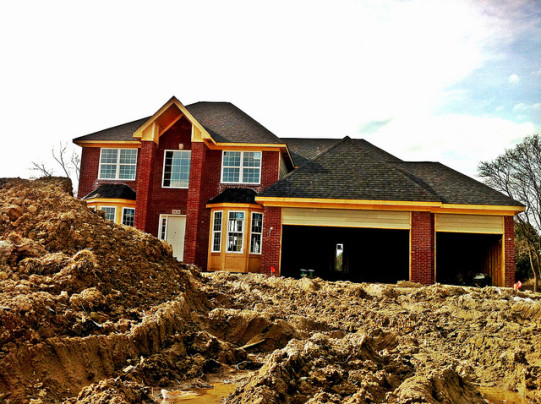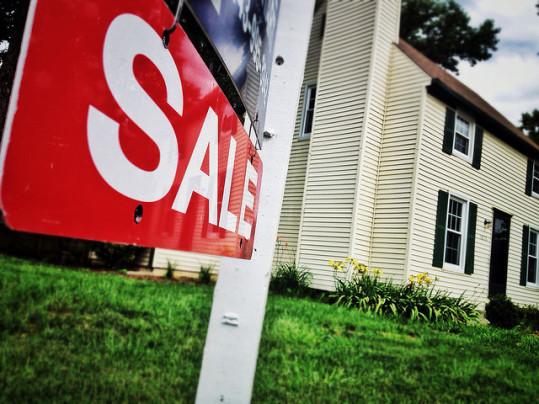Each month, the National Association of Home Builders surveys builders to gauge their confidence in the market for newly built homes. The NAHB’s Housing Market Index scores responses on a scale where any number above 50 indicates that more builders view conditions as good than poor. In November, the index fell one point to 70 but remains near its 2019 peak of 71. Greg Ugalde, NAHB’s chairman, says builders are reporting positive conditions. “Single-family builders are currently reporting ongoing positive conditions, spurred in part by low mortgage rates and continued job growth,” Ugalde said. “In a further sign of solid demand, this is the fourth consecutive month where at least half of all builders surveyed have reported positive buyer traffic conditions.” Among the surveys three main components, the one measuring sales expectations for the next six months scored the highest at 77. That builders are feeling confident about future sales is a good sign for the housing market, as an increase in new residential construction can help balance inventory levels and further moderate price increases. More here.
Archive for November 2019
More Than A Quarter Of All Homeowners Are Equity Rich
Over the years, owning a home has been considered a pretty safe investment. In fact, homeownership has generally been considered a good way to build wealth and boost your bottom line. That’s rarely been more true than it is today. That’s because, home prices have been climbing for the past several years and it’s helped millions of homeowners count themselves among the equity rich. For example, a new analysis from ATTOM Data Solutions shows 26.7 percent of the 54 million mortgaged homes in the US are now considered equity rich – meaning the home’s value is 50 percent more than the total amount of the loans used to finance the property. Todd Teta, chief product officer with ATTOM, says more Americans will see their equity increase as home values continue to climb. “There are notable equity gaps between regions and market segments,” Theta said. “But as home values keep climbing, homeowners are seeing their equity building more and more, while those with properties still worth a lot less than their mortgages represent just a small segment of the market.” More here.
Affordability Hits Highest Level In Three Years
No one buys a house without first asking themselves some questions. The most important of those questions is usually whether or not they can afford it. After all, none of the other factors that play a part in a decision to buy matter a whole lot if it isn’t going to work financially. That’s why a new report from the National Association of Home Builders is encouraging news. Their most recent Housing Opportunity Index found that affordability is now at its highest level in three years. In fact, the quarterly report found that 63.6 percent of new and existing homes sold between the beginning of July and end of September were affordable to families earning the median income. That’s an improvement over second-quarter results, when 60.9 percent of homes were found to be affordable. So what’s the reason for the improvement? Well, mostly declining mortgage rates, according to NAHB chairman, Greg Ugalde. “With mortgage rates at historic lows, consumers are experiencing greater buying power and increasing affordability,” Ugalde said. And, with rates expected to stay low for the foreseeable future, that’s good news for prospective buyers. More here.
Home Purchase Loans Up 15% From Last Year
According to the Mortgage Bankers Association’s Weekly Applications Survey, demand for loans to buy homes is now 15 percent higher than it was last year at the same time. The improvement follows a 5 percent week-over-week increase in the MBA’s Purchase Index. Joel Kan, associate vice president of economic and industry forecasting, says the gains are positive but mostly concentrated on the high-end of the housing market. “Last week was a solid week for home buyers,” Kan said. “Purchase applications increased 2 percent and were 15 percent higher than a year ago. Low supply and high home prices remain a key characteristic of this fall’s housing market, which is why the largest growth in activity continues to be in loans with higher loan balances.” Also in the report, average mortgage rates were up over the week before. In fact, rates increased across all loan categories, including 30-year fixed-rate loans with both conforming and jumbo balances, loans backed by the Federal Housing Administration, and 15-year fixed-rate loans. The MBA’s weekly survey has been conducted since 1990 and covers 75 percent of all retail residential mortgage applications. More here.
Rising Sales To Be Led By New Home Increase
Next year should be a good one for the housing market, according to new remarks from Lawrence Yun, the National Association of Realtors’ chief economist. Yun, speaking at the NAR’s convention in San Francisco, said he expects both existing-and-new home sales to increase next year. In fact, he expects a 3.7 percent year-over-year increase in the number of previously owned homes sold in 2020. That would make it the best year since 2017. But he expects an even bigger increase in new home sales. Yun says he believes new home sales will rise 11 percent to their highest level since 2007. “Some loosening in inventory will happen in 2020, and so we expect home sales to rise,” Yun said. “We’ll see an increase in inventory, but not any oversupply, so home price should continue to move higher – our hope is in a much tamer fashion.” According to Yun, home prices will rise 4.3 percent in 2020. That’s a smaller increase than this year, when prices will end up about 5 percent higher than they were the year before. Between slower price appreciation, low mortgage rates, and improved inventory, 2020 is looking like it could be a good year for buyers. More here.
Is A Buyer Boom On The Horizon?
First-time home buyers typically account for a large share of the houses sold each year. In fact, historically, they’ve represented around 40 percent of all home sales. However, over the past decade – due, in part, to factors such as student loan debt, the housing crash, and a lack of affordable inventory – the number of first-time buyers has fallen. According to a new analysis from TransUnion, that may be about to change. Their analysis projects at least 8.3 million first-time buyers will enter the market over the next three years, which is more than any three-year period in the last decade. Joe Mellman, senior vice president at TransUnion, says there’s reason for optimism. “While we’ve recently seen a boom in refi activity, actual homeownership rates are down,” Mellman said. “But we may be starting to see daylight as slowing home price appreciation, low unemployment, increased wage growth, and low interest rates are helping affordability. As a result, we are optimistic that first-time home buyers will contribute more to homeownership than at any time since the start of the Great Recession.” How an influx of new home buyers affects market conditions will largely depend on how well housing stock can keep up with demand. More here.
Americans Remain Confident In Housing Market
Each month, Fannie Mae surveys Americans to gauge their interest in buying a home. Their Home Purchase Sentiment Index asks respondents for their feelings about the housing market, mortgage rates, home prices, their personal financial situation, employment, and whether or not it’s a good time to buy or sell a home. According to the most recent survey, home buying sentiment remains high, though down from the month before. Doug Duncan, Fannie Mae’s senior vice president and chief economist, says a lack of affordable homes for sale is the main factor weighing on prospective home buyers. “The ‘good time to buy’ component has declined notably, despite low mortgage rates, due in part to the persistent challenge of a lack of affordable housing supply,” Duncan said. However, he also noted that the number of Americans expecting home prices to increase over the next year has fallen to a 7-year low. Between that, low mortgage rates and a strong job market, housing sentiment and buyer demand remain strong. In fact, the overall index is now 3.1 points higher than at the same time last year. More here.







